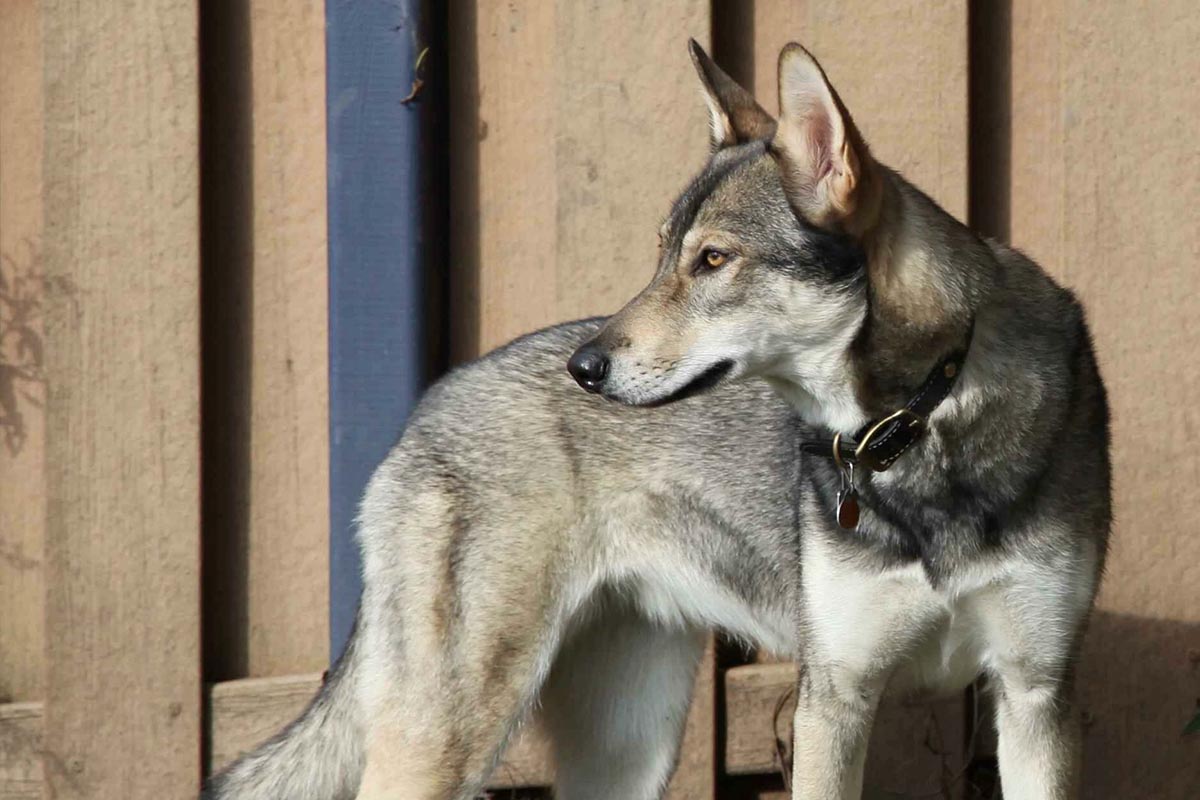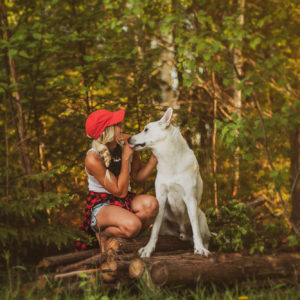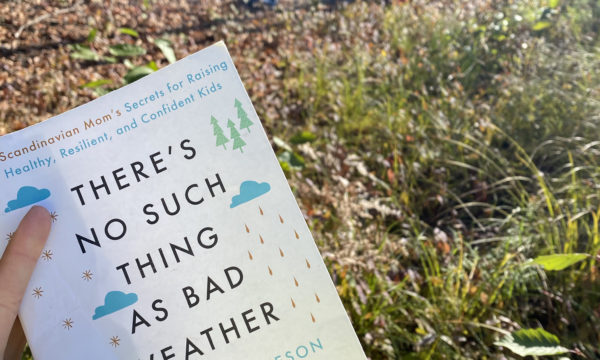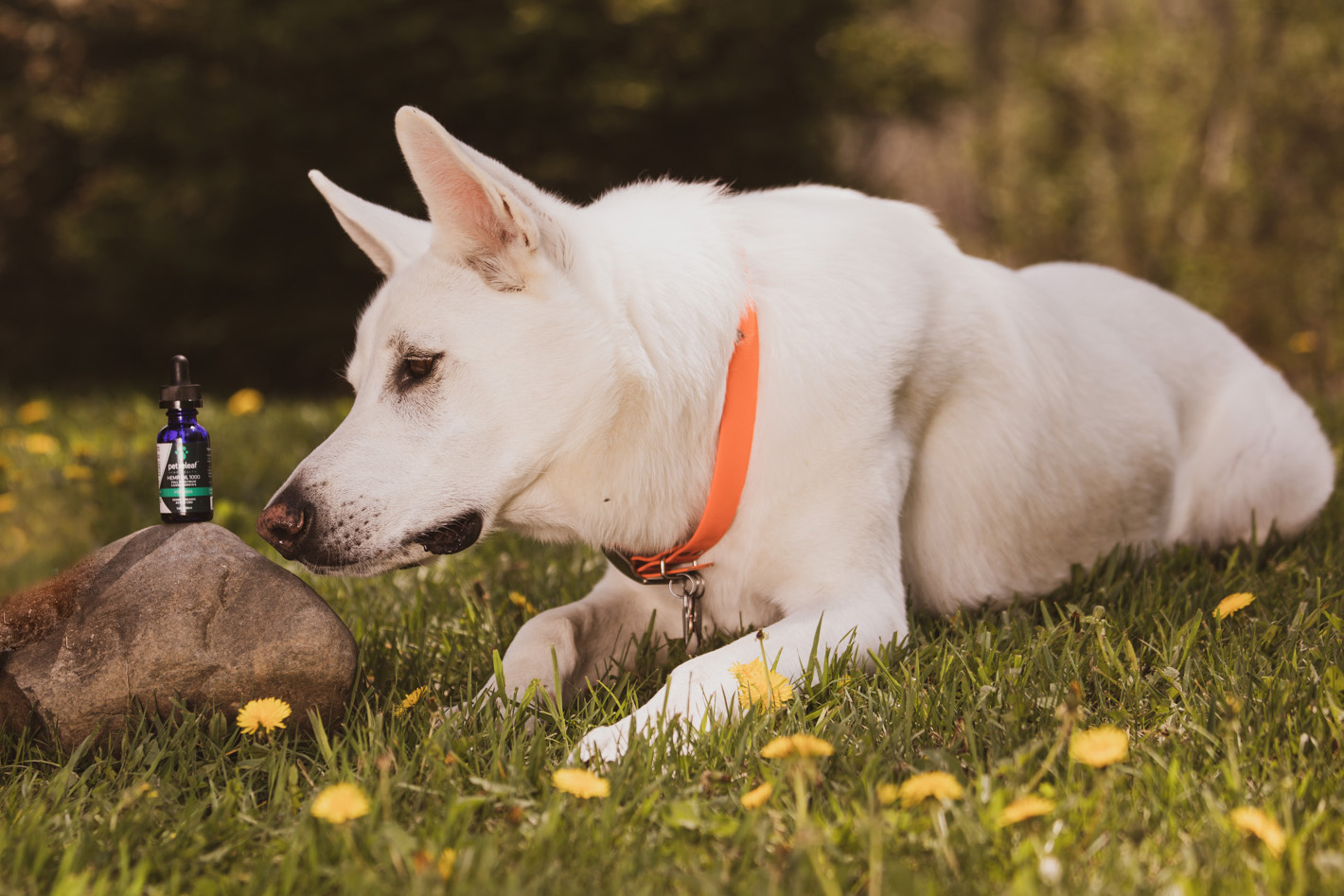Hawthorne Tamaskan
Wolfdoglife: We are very excited to share more info on Hawthorne Tamaskan with you! Although we didn’t get our pup from them, I wouldn’t hesitate to choose them as a breeder and I personally think very highly of them. They are always helping anyone with questions all while breeding amazing pups!
How did you first learn about Tamaskans?
I found the breed in 2008 when I was doing research for a current radio telemetry project with coyotes. For some reason, Tamaskan came up in a web search for feral dog heat cycles. Funny how things come up this way.
What made you fall in love with the breed?
I worked with wild coyotes in varying capacity for over ten years. As an undergrad student I trapped and radio collared two at a state park, and followed their movements for a season until they dispersed and were killed. I also produced my senior film project on coyotes as well. This translated into a full blown graduate project at Montana State where I followed the coyote population in Yellowstone, as well as the local biologists there, for my second year as well as my thesis film. My documentary took me to Algonquin Provincial Park in Ontario where I shot Algonquin wolves for the project as well. I then did post grad work training another biology student how to trap and radio collar coyotes. All this experience and time spent with them translated into a lot of public lectures; over 40 in all. At every single presentation folks ask if coyotes or wolves make good pets. My answer has always been and always will be a resounding no. So when I came across the Tamaskan – it seemed like a perfect fit for people who want that look and behavior, but who shouldn’t or can’t own a wolf because of local laws. As a personal ethic, I just don’t believe in owning wildlife.
What is your story on becoming a Tamaskan breeder?
Well, at the time we were living in our hometown after moving back from Montana. We experienced a break in, and our cameras, and other expensive items were stolen. We had always wanted a dog and figured we were settled enough to take on the responsibility. Alarm systems give criminals 30 seconds before they have to get out. A dog is a much better deterrent. So we went to the local pound, found a mutt, and brought him home. We loved him so much and he was such a good boy that we decided to get him a buddy. That was about the time I found Tamaskan Dogs in my search. And it’s been downhill ever since! We brought home our foundation bitch in 2009 and Freyja’s still doing great and lives at home with us. I really felt I had a lot to give to the breeding community because I have a background in biology including genetics. Additionally, I wanted to help the breed succeed and so I recognized that we needed a better breed standard and needed to be recognized by an outside registry that still allowed open stud books. We worked toward those goals and accomplished them.

Do you have a best memory or stand out moment?
Every litter is a new adventure. There is nothing dull or repetitive about it. Every experience is different and so we strive to learn from each experience and each individual pup.
Of course, Freyja winning her Championship at ARBA / KC USA during the exhibition for consideration as a new breed with ARBA was remarkable as well. It was 80 degrees that day and so we had a lot of water on hand for all the dogs, a tent for shade, and I had my crate fans going full blast. There we were in the sun, in suits, hoping that the judges saw in our dogs just a small iota of what we saw in them. Six judges looked at Freyja. And ARBA’s ring is huge! She just kept wanting more despite the heat and sun. She was really enjoying herself that day and was such a good girl. We were so very proud to represent the breed and just astonished that we, complete newbies, could do pretty well in the ring. Judges remarked that they haven’t seen dogs move like ours in a long time – so that really hit it home that our structure is something to hold on to as best we can. Also in attendance that day were our dogs Darwin and Raven; and Teresa Cutler with Dylan; Dottie Brown with Max and Mark Firley with Kona. It was an exciting day and a real treat to have a mini-meetup and reunion. That was October 2013.
What makes your kennel different than other breeders? Anything special you do?
I believe we are still the only Tamaskan Dog breeder to be listed on the Puppy Culture breeder directory. This means that we have submitted proof that we use the Puppy Culture protocol for rearing and socialization for our litters. Jane Killion’s methods are very thorough and our litters have improved vastly since we started using her methods. It is labor intensive, but litters are anyway.
Also, we do structure testing for our pups – which drives our buyers nuts. But we do this at 8 weeks so we can send the best representations of the breed to breeding homes. If we lose our good structure, it could be generations before we get it back. I want to keep that beautiful movement we have. It reminds me so much of watching coyotes and wolves move in the wild. And that’s no accident. This is due to proper structure not haphazard breeding. Understanding which traits and faults can and can’t be mixed is an art form and a risk with each breeding. Which is why I say above we are always learning from what we do.
We also do yearly eye exams on our dogs. A single CAER is really useless. Canine ophthalmologists recommend eye testing through the age of 8 to ensure juvenile cataracts are not an issue.
Tell us about your current breeding dogs:
Ruuq, Hawthorne Astrila, has just had her second litter. She is 4 years old. 55 pounds, so a little small for the breed, but she has other virtues.
Darwin, J&J Devil of Piru, has sired a few litters. He is 7 years old and still in tact and fertile. However, he’s getting to the age where we could lose him as a breeding dog so he has been put on ice for litters in 10-20 years from now. He’s a big boy at 100 pounds.
Ember, Hawthorne Gates of the Arctic, will be 2 on July 5th. She just needs her eye exam to be completed. She may be bred this coming winter should she pass her CAER.
(We also have Raven and Freyja, both retired breeding bitches)
What state are you located in?
Pennsylvania

What type of person (or family) would be an ideal owner for a Tamaskan?
We look for people with previous dog experience, who currently have one or more dogs, have a 6′ fence and an active lifestyle. We also must see people who are willing to learn from their dogs, take obedience classes, and willing to put in the work for socialization.
Are there any downsides the breed has that you would like people to be aware of?
This breed is a lot of work. They are not something that should be bought for looks–no breed should. Tamaskan require a lot of early socialization and should ideally meet 100-300 friendly people and friendly dogs before the age of 16 weeks to develop into well adjusted adults. Socialization should continue throughout the dogs life averaging 100 dogs and people per year. Despite what others say, mine at least have a high prey drive. Face it: these are dogs. And canines have a prey drive. Also, these guys need daily on-leash walks to be happy as well as mental stimulation which is why we highly encourage formal obedience classes (or other canine sports like agility). This breed will test your patience. They are problem solvers and have learned to open doors and manipulate each other and their humans. For instance: we may all be relaxing for the evening enjoying a good show on TV. Freyja will decide that it’s time to go out. She will woo woo at us and everyone thinks it’s time to go outside. All the other dogs, (including at least one human) jumps up to go to the door to let the dogs out. This is Freyja’s cue to steal a seat on the couch. Good girl!
How can a person prepare for a Tamaskan?
Read good books on training. Baby proof your house, then do it three more times. Anything within reach is fair game. Have 48 hours to dedicate to the pup once you bring her home. This is important bonding time to gain her trust. Don’t correct the puppy for these first two days. Follow your breeders advice on potty training. We start potty training at 3 weeks of age to pine shavings under the whelping pad and then in a potty area in the playpen. An easy transition is to make a small pile of pine shavings in the yard to help the puppy understand this is where to go.
Get appropriate toys. Hard rubber toys and ropes are a must. Also have a toy that is used only for training sessions like one with a squeaker.
You are bringing home a baby puppy. This puppy is going to cry and you need to have nerves of steel the first two nights for crate training. If you give in, the puppy will learn how to manipulate you. And with this breed crate training is an important tool to keep the puppy safe from herself when you aren’t home. It also teaches her about potty training, and also what belongs to her and what doesn’t.
Never play with your puppy with your hands. Always have a toy in your hand. This is very important for children, too, as they tend to squeal and get the puppy even more amped up. Hands are for petting, not playing. It is not appropriate to wrestle with your puppy. Always reward good behavior and ignore bad behavior that doesn’t put the puppy in harms way. Always have treats on hand to reward good behavior. Teach recall from day one. It could save your puppy’s life some day. We use the puppy call from three weeks of age on so puppies leave here with a good sense of recall.
Use a harness, not just a collar. A good three point harness or an Easy Walk with a carabiner to connect the harness to the collar is important so the pup can’t get away from you while out on walks. They are so lanky that they can work their way out of anything less. If you go hiking with your Tamaskan, invest in a $20 orange vest. That way people know it’s a dog, and not a coyote or a wolf walking with you.
Did I mention patience?
These guys are smart, so certainly plan on enrolling in classes with your pup. Not only is it a good way to socialize your dog, but it’s a great way to strengthen the bond between you and your pup and keep her mentally stimulated. These guys love to learn and quickly absorb anything we teach them.
I recommend a rake and slicker style brush. Don’t use a furminator – you’ll damage the dogs coat.
If you like an impeccable house – this breed is not for you. They blow their coats twice a year and it’s a lot of fur – just like a husky.
Clear your yard of anything the puppy could choke on. Mulch is a no no – it’s full of toxins and you can bet that the puppy will put those little sticks in her mouth and chew on them. Basically, anything that’s planted in your yard will probably get chewed on or dug up so we just recommend grass and nothing else.

What are your favorite activity you personally enjoy with your dogs?
Hiking. But that’s what I like to do even without dogs. I just love sharing hiking with them and they love all the scents and sights we encounter.
What are some activities you think this breed is well suited for?
My line are certainly pullers. We do Skijor and canicross with them and also have a small sled. Some of our pups have gone on to be therapy dogs as well–but that’s determined by temperament. Tracking is another skill the breed is listed to excel at but until recently we haven’t had the resources or space to practice. I can’t wait to get going with this new activity! Our male is far too big for agility, though he does like going through the tunnel. We actually expose our litters to baby puppy agility equipment to give them confidence in situations they will experience over their lifetimes.
For someone who is considering owning a Tamaskan, what is the most important thing you want them to know?
This probably sounds crazy, but this breed will be unlike any you have experienced. And this is both in a good way and in a bad way. They are loving and comedic. But they can be destructive and strong willed, too. If not properly exercised (mentally and physically) they will create their own recreation by digging or chewing.
Also, do your breed research. Half of the folks who inquire about a puppy expect him or her to be left alone for long periods of time during the week. This won’t work with a Tamaskan. You really need a second dog or someone who works from home or we would be setting the puppy up for failure.
The breed database is public. Do your research on dogs: www.tamaskan-database.com
And although not very active, the best place to learn about the breed is still the chat forum: www.tamaskan-forum.com Facebook just isn’t conducive to looking things up.
How can someone get on your waiting list for a puppy?
We require an application to be considered for our waiting list. Please email us for one at: hawthornetamaskan@gmail.com
Disclaimer: The Tamaskan breed is not technically a “wolf dog”. They are domestic dogs that have been breed to look like wolves. I will feature dogs that look like wolves as well as classified “wolf dogs” but I want to clarify that the Tamaskan does not fall under the true wolf dog category.





